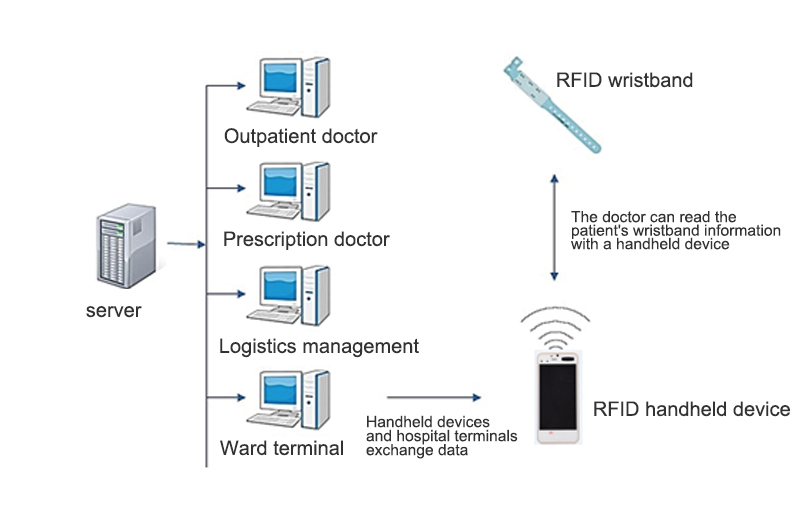First, hospital information system RFID solution
Today, with the continuous improvement of the medical system, the degree of informationization of hospitals has been greatly improved. Nowadays, large hospitals have already used the Hospital Information System (HIS). After applying the HIS system, it is convenient for the masses to seek medical treatment, also improve medical service level. However, some problems in the current HIS system have not been solved fundamentally. For example, in the event of an emergency, in the face of a patient who must be rescued in time, doctors and nurses must first look for the patient case, view the patient's medical history and the history of drug allergy. Important information will be promptly rescued according to the situation, but these will delay the best time to rescue the patient. RFID solves all your worries.
However, some problems in the current HIS system have not been solved fundamentally. For example, in the event of an emergency, in the face of a patient who must be rescued in time, doctors and nurses must first look for the patient case, view the patient's medical history and the history of drug allergy. Important information will be promptly rescued according to the situation, but these will delay the best time to rescue the patient. RFID solves all your worries.
When the hospital adopts the RFID system, these problems will be solved. Each hospitalized patient will wear a wristband with RFID technology, which stores relevant information about the patient, including basic personal information and important information about the history of drug allergy. More detailed information can be mapped to the database via electronic coding on the RFID tag.
In the current HIS system of the hospital, basic information has been entered for each registered patient, but this information is not followed by the patient. Only the medical staff can check the patient's accurate information before going to the computer terminal in the office area. Now, with a simple RFID smart wristband, healthcare professionals can keep accurate information about every patient, anytime, anywhere.
Hospital application RFID system schematic:

As can be seen from the above figure, the hospital server stores the patient's final complete case. Each ward doctor's RFID handset can also store the relevant case of the patient in charge, and the handheld can accurately read the patient's wristband relevant information, and can also write corresponding information, such as: whether the patient is allergic to a certain drug, whether he has already taken a needle today, whether he has taken medicine today, and so on, it is greatly improving the efficiency of hospital management of patients, RFID technology already can completely replace the patient information card in front of the existing bed.
In daily medical activities, we do apply patient identification all the time, including the use of a bedside identification card that records the patient's condition, the patient's inpatient service, and so on. Hospital staff often use words like “patients in bed 10, taking medicine” to guide patients to accept various treatments. Unfortunately, these methods often result in erroneous recognition and even medical malpractice. In fact, we have not really used the correct and effective patient identification to reduce medical malpractice and improve medical management.
The hospital's clear identification of patients should following three basic principles: provide accurate patient identification, and the identification is accurate and uniform, covering all relevant departments of the hospital; Establishing a clear correspondence between patients and medical files, various treatment activities; Use reliable identification products to ensure patient identification is not exchanged or lost.
By using a specially designed patient identification wristband (smart-Wrist), the signature tape labeled with the patient's important information is attached to the patient's wrist for a 24-hour personal identification, which ensures effective and accurate identification of the patient at any time. At the same time, the specially designed patient identification tape can be prevented from being exchanged or removed, ensuring the uniqueness and correctness of the identification object.